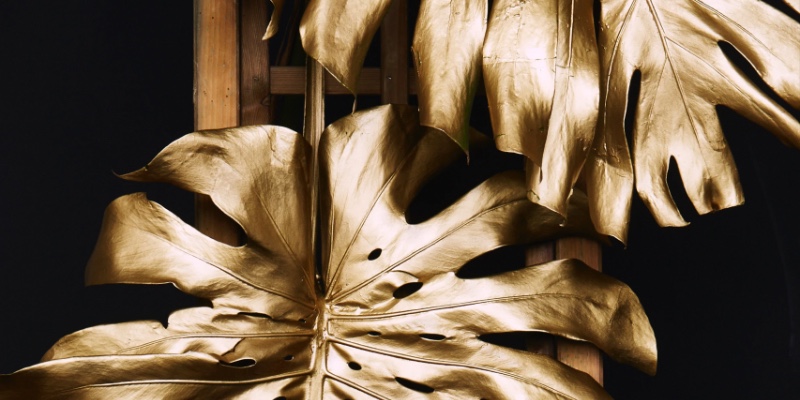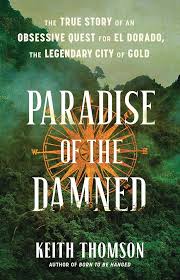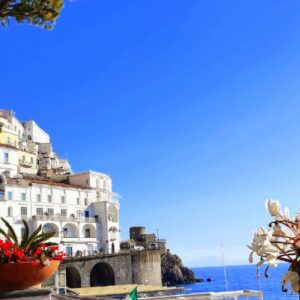The sun was literally roasting Juan Martín de Albujar to death. It wouldn’t kill him, though. The hunger would do him in first. Or so he thought as his canoe drifted down a vast, uncharted river somewhere in the Amazon jungle.
He hadn’t eaten for days, not since the gunpowder store exploded and the blame fell on him, the munitions master. There’s nothing a munitions master can do about a wind-tossed spark, but General Silva needed a scapegoat in order to abort the expedition, and it was imperative that the conquistadors get out of the jungle immediately: between the crocodiles, jaguars, and “savages”—their term for the Indigenous peoples—Silva and his 140 men wouldn’t have survived another day without gunpowder. If not for the sudden dearth of it, he likely would have shot Albujar. And he certainly would have executed him on the spot if the munition master’s many friends hadn’t pleaded for mercy. In a compromise of sorts, Silva dumped him into a canoe without any provisions and sent him floating down a river in Guiana (an expanse comprising parts of modern Guyana, Suriname, Brazil, French Guiana, and Venezuela).
From Albujar’s point of view, it was the opposite of mercy: a slower, more tortuous death than a bullet. If he were to go ashore—assuming the crocodiles let him past—he stood to become supper for the jaguars before he could find anything to eat himself. The lush jungle, paradoxically, offered almost nothing in the way of food. If he could elude predators, he might be able to track down a rodent. Still, he would have to contend with scorpions, tarantulas, and the fourteen-inch-long centipedes that killed the tarantulas. Not to mention the hundred-odd species of venomous snakes, including the Amazon’s deadliest, the fer-de-lance, or spearhead, named for the way it attacks when disturbed (and because it has the sensitivity of a hair trigger, it’s disturbed frequently).
Even the flora could kill a man—the wispy razor grass hanging from the branches, sharp enough to slit a throat, or the aptly named strangler fig roots dangling everywhere. But the greatest obstacle Albujar would face was ordinary, nontoxic flora: the roots, branches, vines, mosses, leaves, and lichens fighting for every last free inch of space that offered access to the odd ray of sunlight managing to squeeze through the forest canopy. Collectively they were impassable, the true king of the jungle, making rivers the only practical way of getting anywhere. Therefore, Albujar’s best hope—his only hope, really—was to stay in the canoe and pray he came upon civilization of some sort.
As it transpired, he came upon a group of “savages.” Or, rather, they came upon him, snatching him from the canoe so quickly that he couldn’t be sure whether they were real or the latest concoction of his heat- and starvation-induced delirium. Next thing he knew, they were marching him blindfolded through steamy rainforest to an undisclosed location. Or maybe they had disclosed it; he couldn’t understand a thing they were saying.
The march continued for the remainder of the day, the entire day after that, and then for another twelve days, with Albujar forced to endure step after excruciating step on what were likely bleeding, blistered feet, while rain-and-perspiration-dampened breeches chafed the insides of his thighs to bloody pulp and the mosquito bites riddling the rest of his body were slashed into open sores by the underbrush. The overhang, which the blindfold prevented him from ducking, was worse. And those difficulties were mere trifles compared to the terror: what would happen to him when they finally got wherever they were going? The savages were known to be extremely hostile to outsiders. The Aztecs, for example. When a stranger wandered into their midst, their standard practice was to take him to the top of one of their pyramids, slice open his chest, and wrench out his still-beating heart before ritually sacrificing him.
At noon on the fifteenth day of the march, Albujar’s captors peeled off his blindfold, revealing stone and adobe homes as far as he could see. “Manoa,” they said, their first word he’d recognized. It meant “lake,” and, more pertinently, it was the name of a gold-rich city supposedly built by Incas who’d fled the conquistadors in Peru. Manoa had not only been General Silva’s objective but also that of dozens of other expeditions over the previous forty years, beginning in 1529, when conquistadors started hearing tales of the emperor who annually coated his body in turpentine and then rolled around in powdery gold dust, gilding himself, before canoeing to the center of a lake, diving in, and sloughing off the gold as an offering to the gods. El hombre dorado, the Spanish took to calling him. The golden man. The moniker soon became an alternative name for his empire, the existence of which was entirely plausible. After all, twice already in the sixteenth century, comparable dominions had been discovered in the New World: the Aztecs’ Tenochtitlán (modern-day Mexico City) by Hernán Cortés in 1519, and the Incan City of the Sun, Cusco (in Peru), by Francisco Pizarro in 1532.
Those were small towns, however, Albujar saw now, compared to Manoa, which was so vast that it took him and his captors a day and a half to walk through it—no doubt heading for the pyramid where he would die. On the way he saw tens of thousands of small but solidly built homes, their residents naked save for body paint and substantial gold ornaments suspended from their ears, noses, and necks. They were all agog too: he was the first white man they’d ever seen. Ultimately his party came to a palace, where, to his surprise, rather than die, he was invited to stay as an honored guest.
The ensuing months amounted to an extended vacation in a tropical paradise for him, his hosts catering to his every whim. During that time, he learned their language and used it to compile material for the report he planned to deliver to his countrymen, primarily about the emperor, whom the Manoans called Inca. Compared to Inca, Midas had merely a passing interest in gold. Inca’s palace was brimming with it: the guards’ armor, the tableware, even the pots and pans in the kitchens. The halls were lined with life-size golden and silver statues of every living thing in the kingdom, even the trees. Outside lay more gold still, piled like logs left to be burned. And the lake ritual wasn’t just an annual affair: every single day, Inca slathered his body—not with turpentine but with a whitish balsam of the Amyris plants and Calophyllum trees—before his attendants blew fine powdered gold dust onto him using hollow canes.
At the end of Albujar’s seventh month in Manoa, when he prepared to go home, Inca allowed him to take as much gold as he could carry. The haul would translate into tremendous wealth and power for Albujar. Even better would be the look on General Silva’s face.
Inca’s men guided Albujar back to the Orinoco, at which point his return to civilization might have been a straightforward few days’ canoe ride. Soon into his journey, though, he was attacked by Orenoqueponi tribesmen, who stole all the gold Inca had given him save for some beads inside a pair of large, dried gourds—the thieves must have assumed they were merely canteens. Albujar spent seven years in their captivity, until earning enough of their trust that he was able to escape.
___________________________________


















